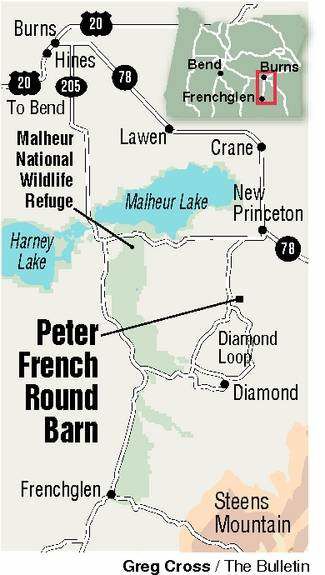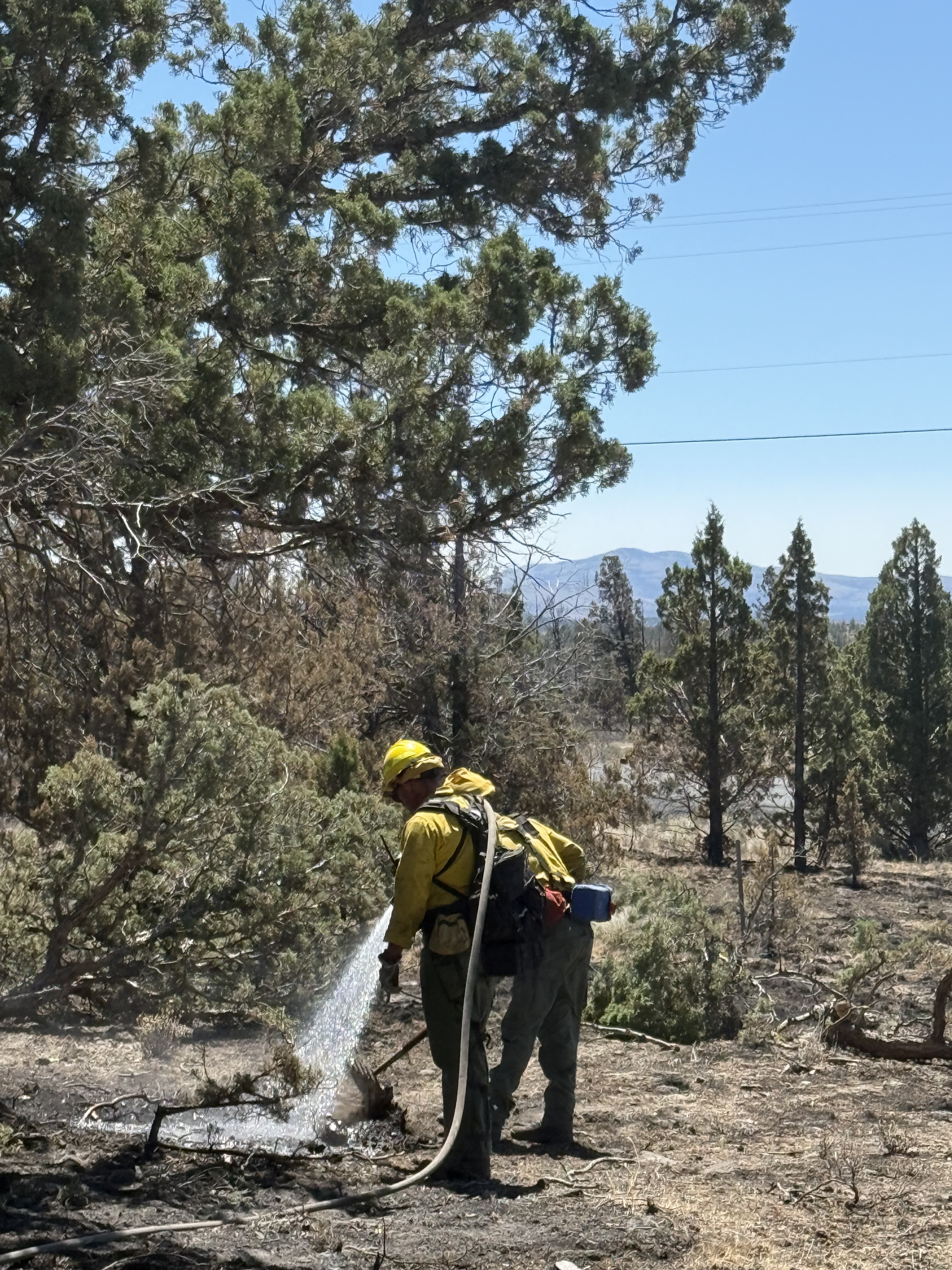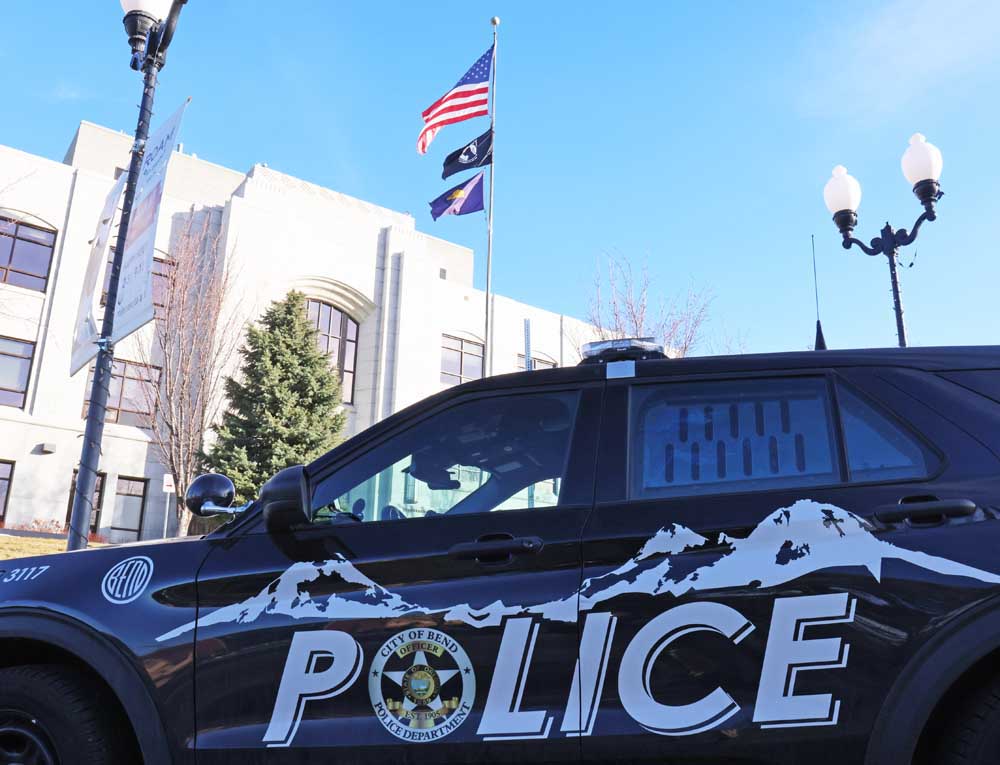Round Barn
Published 4:00 am Friday, March 3, 2006

- Round Barn
When we stepped into the homespun lobby of the Hotel Diamond early one Sunday morning, I figured this outing in search of the Peter French Round Barn had potential.
After a brief exchange with proprietor David Thompson, I knew we were on to something fine.
Trending
No, they don’t serve breakfast. Yes, they do serve lunch, but not until 11. Dinner, served family-style around common tables, is hours away. But the coffee’s hot and there’s homemade coffee cake fresh out of the oven. Please sit down.
We did and an hour later we’d made some new friends, gleaned plenty of serviceable nuggets about the countryside hereabouts and managed to compliment Ramonda Thompson’s baking prowess by wolfing every crumb.
Diamond huddles at the base of Steens Mountain about 20 miles northeast of Frenchglen and 50 miles southeast of Burns. It’s a couple of clapboard houses, the remains of an old stone structure and this handsome antique hotel at the end of the paved road.
Around the turn of the century (THE century, not this piddling millennium thing we noted a few years back), Diamond was a major provisioning point for sheepherders and cattle ranchers in the region. There were two stores in town then, a saloon and the Hotel Diamond.
Today, the Diamond area is still cattle country. But it’s enviro country as well (witness the newly minted wilderness status of a large chunk of Steens Mountain and the lure of the nearby Malheur National Wildlife Refuge). People like the Thompsons help bridge the gap.
David Thompson is a fourth-generation Harney County rancher (daughter Maria makes five); his salt-of-the-earth bonafides are impeccable. The hotel – run by the Thompsons, mother Shirley and sister Gretchen Nichols – caters to a cross section of travelers bound by an affection for this great big Great Basin outback and its unique history.
Trending
Out front, Bush-Cheney pickups slide in beside Plant-a-Bush-Back-in-Texas Subarus. Pass the chicken can be a powerful common thread.
So can David Thompson, whose great-grandparents managed the hotel more than 100 years ago. He poured us another shot of strong coffee and gave us a brief tour of the ice house and pub. Armed with directions to the Round Barn, we shoved off into the big outside.
Before you see the Round Barn, you come to the Round Barn Visitor Center, a modern-looking building with a pointy roof operated by the Jenkins family, which has owned the 20,000-acre Barton Lake Ranch for, you guessed it, five generations.
Richard Jenkins, a fourth-generation cattle ranching peer of Thompson’s, is there to greet visitors when he’s not showing them the family museum or leading historical tours of Steens Mountain and environs. His son runs the beef operation while Jenkins steeps himself in the history and culture of this vast landscape.
Vast?
Look outside. The plain runs on until it meets the sky.
And out there amongst all that sagebrush and cumulonimbus, just down the road, is this huge wood-sided, pointy-roofed building that’s the center of attention around these parts. Why? It’s remarkably well-preserved and the last remaining round barn in this important cattle-raising region. We had it all to ourselves.
According to Jenkins, cattle baron Peter French built the barn in the late 1870s or early 1880s. The center truss beams inside that resemble an umbrella, were built using massive juniper planks. The unusually shaped barn is 100 feet in diameter.
French, who was a step or two ahead of his time, used the circular barn to train horses during the winter.
French was shot and killed by a disgruntled homesteader the day after Christmas in 1897 while several of his unarmed P Ranch buckaroos watched helplessly.
In his book, ”The Oregon Desert,” R.A. Long writes of one of the cowboys, Dave Crow, who rode hundreds of miles, all the way to Winnemucca, Nev., to wire French’s relatives of his death. After 48 hours in the saddle and several horse changes, Crow got the grim job done.
”There were no highways, so no one knows his exact route or mileage,” according to Long. ”But he stuck to it, and sent his wire that signaled the end of the one-man cattle empires in Oregon. … No one on the way questioned his right, while on such an errand, to take the best horse on the place.”
Back in the visitor center where it’s warmer, Jenkins offers advice on the best burgers in the area (Hotel Diamond and the Hilander in Burns), the best roadside Native American art outlet (Oard’s on Highway 20, 25 miles east of Burns) and the best place to get genuine Harney County souvenirs and gifts (right where we’re standing).
I came away from this particular outing with a pleasant conclusion. All this natural beauty and rough-and-ready history wouldn’t be nearly as spectacular without the Thompsons and the Jenkins and the guy at the cafe in Crane who gave us directions, to flesh it all out.








